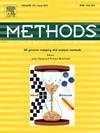固定化动物肝微粒体:化学酶合成中高效酯水解的通用工具
IF 4.3
3区 生物学
Q1 BIOCHEMICAL RESEARCH METHODS
引用次数: 0
摘要
动物肝微粒体是羧酸酯酶的丰富来源,具有潜在的生物催化应用。然而,它们的不稳定性和难以重用限制了它们的实际应用。为了提高Perloza MG微颗粒的稳定性和可重复使用性,研究了家鼠、野猪、小鹿和狍子的肝微粒体在Perloza MG微颗粒上的固定作用。固定化显著提高了微粒体的稳定性和pH耐受性,特别是来自D. dama的微粒体,在较宽的pH范围内保持酯酶活性(5-9),并使其在连续10个周期内可重复使用。固定化D. dama微粒体成功用于制备规模的化学酶合成亲环蛋白D抑制剂,总反应收率为68%,最终产物纯度为98%,证明了其可持续有机合成的潜力。本文章由计算机程序翻译,如有差异,请以英文原文为准。
Immobilized animal liver microsomes: A versatile tool for efficient ester hydrolysis in chemo-enzymatic synthesis
Animal liver microsomes are a rich source of carboxylesterases with potential for biocatalytic applications. However, their instability and difficulty in reuse limit their practical application. This study investigates the immobilization of animal liver microsomes from four species Mus musculus (house mouse), Sus scrofa (wild boar), Dama dama (fallow deer), and Capreolus capreolus (roe deer) on Perloza MG microparticles for enhanced stability and reusability. Immobilization significantly improved the stability and pH tolerance of the microsomes, particularly those from D. dama, maintaining esterase activity across a broad pH range (5–9) and enabling the reusability over ten consecutive cycles. The immobilized D. dama microsomes were successfully employed in a preparative-scale chemo-enzymatic synthesis of a cyclophilin D inhibitor, achieving a total reaction yield of 68% with 98% final product purity, demonstrating their potential for sustainable organic synthesis.
求助全文
通过发布文献求助,成功后即可免费获取论文全文。
去求助
来源期刊

Methods
生物-生化研究方法
CiteScore
9.80
自引率
2.10%
发文量
222
审稿时长
11.3 weeks
期刊介绍:
Methods focuses on rapidly developing techniques in the experimental biological and medical sciences.
Each topical issue, organized by a guest editor who is an expert in the area covered, consists solely of invited quality articles by specialist authors, many of them reviews. Issues are devoted to specific technical approaches with emphasis on clear detailed descriptions of protocols that allow them to be reproduced easily. The background information provided enables researchers to understand the principles underlying the methods; other helpful sections include comparisons of alternative methods giving the advantages and disadvantages of particular methods, guidance on avoiding potential pitfalls, and suggestions for troubleshooting.
 求助内容:
求助内容: 应助结果提醒方式:
应助结果提醒方式:


